
Proper line spacing in PowerPoint can help better align your content and fix issues in PowerPoint templates related to legibility. PowerPoint line spacing can be adjusted using some options from the Ribbon menu. Below is an overview of how to change line spacing in PowerPoint.
How to Change Line Spacing in PowerPoint
Select the text to change line spacing in PowerPoint and go to Line Spacing from the Home tab from the Paragraph menu. As you can see from the image below, you can adjust line spacing between 1.0, 1.5, 2.0, 2.5, and 3.0 from this menu.
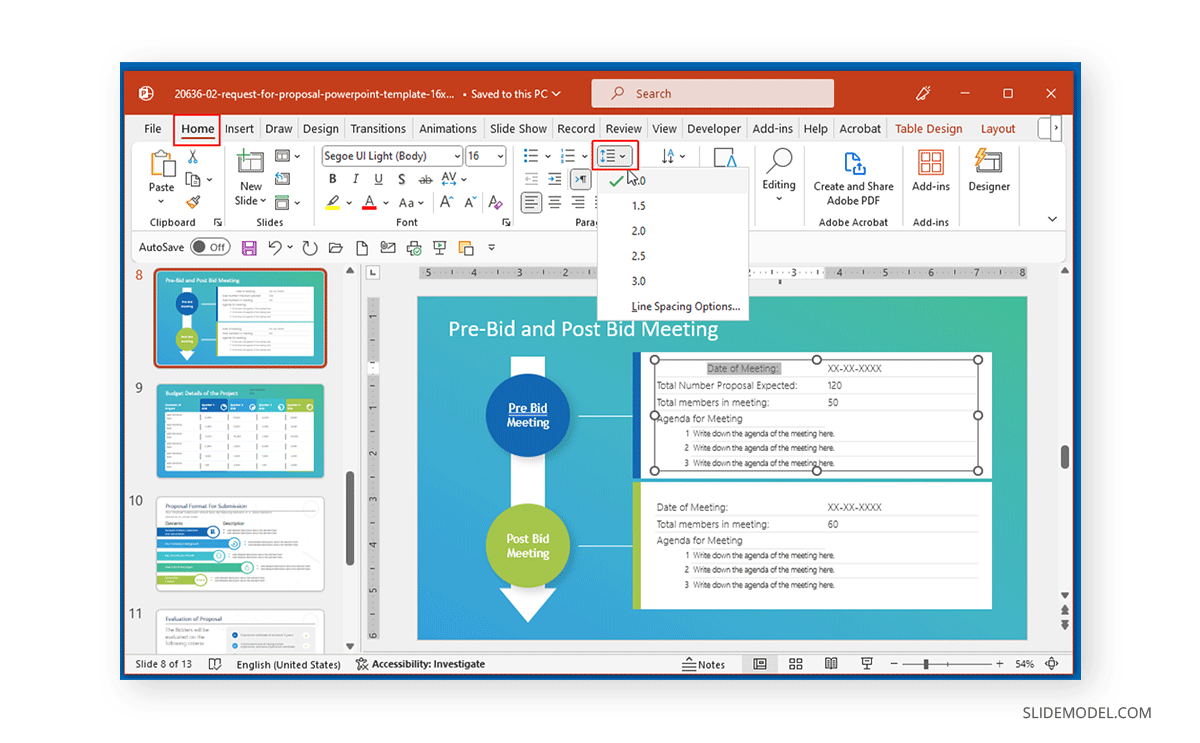
To adjust line spacing using custom parameters, go to Home -> Line Spacing -> Line Spacing Options.
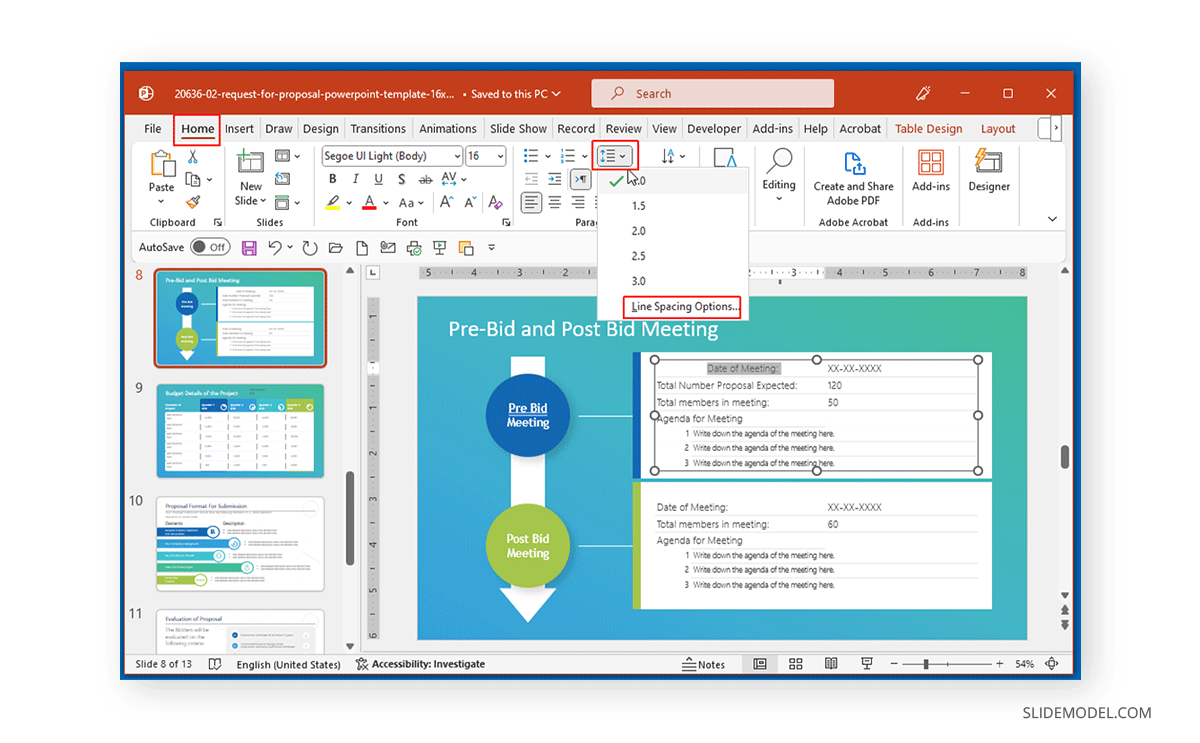
The Spacing section allows you to adjust line spacing from the dialog box that appears. You can also adjust indent and text alignment according to need.
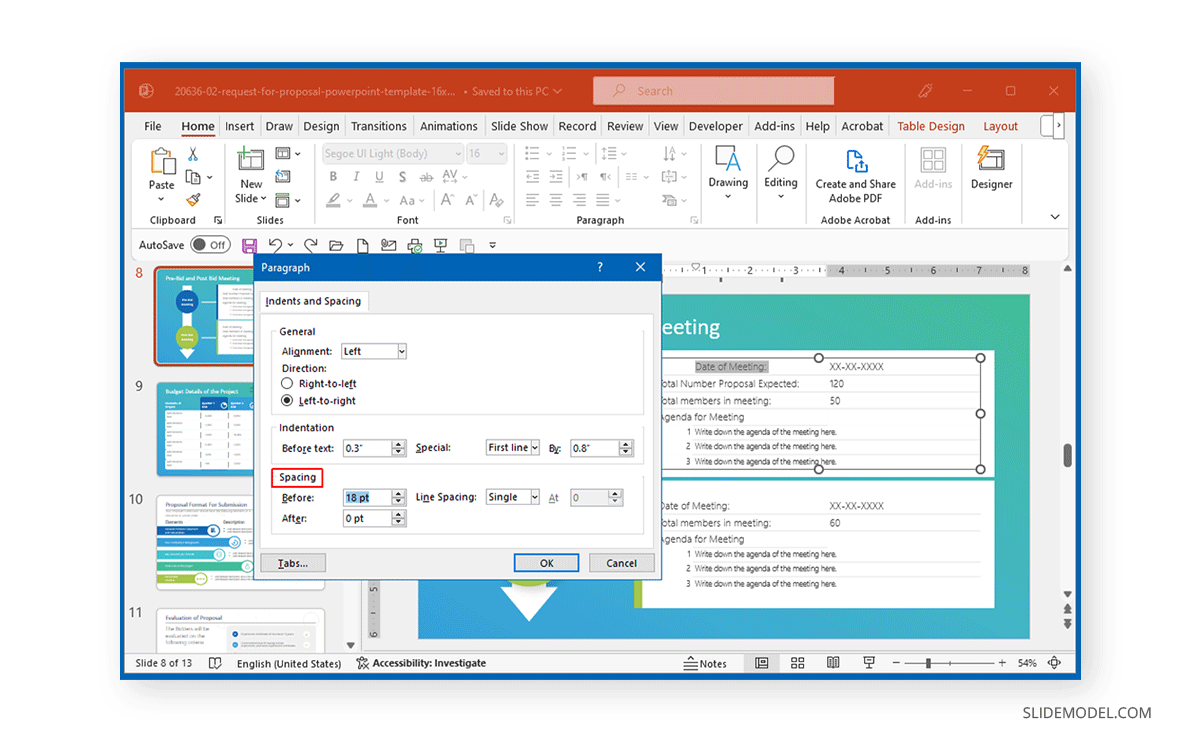
How to Change Indent in PowerPoint
To change the indent in PowerPoint and adjust the space between text, go to the Home tab and use the Increase list level and Decrease list level options for selected text. The image below shows the Decrease list level option for adjusting the text-indent.
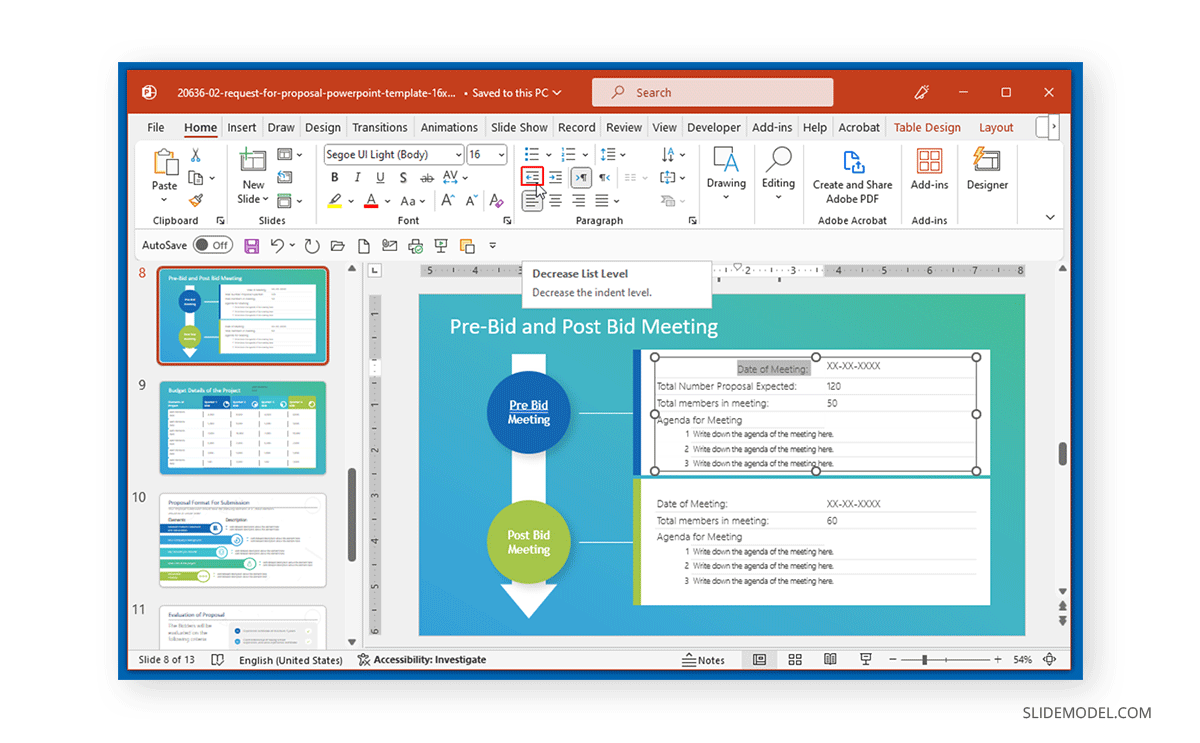
Similarly, you can move the text using the Increase list level to change the indent for the selected text.
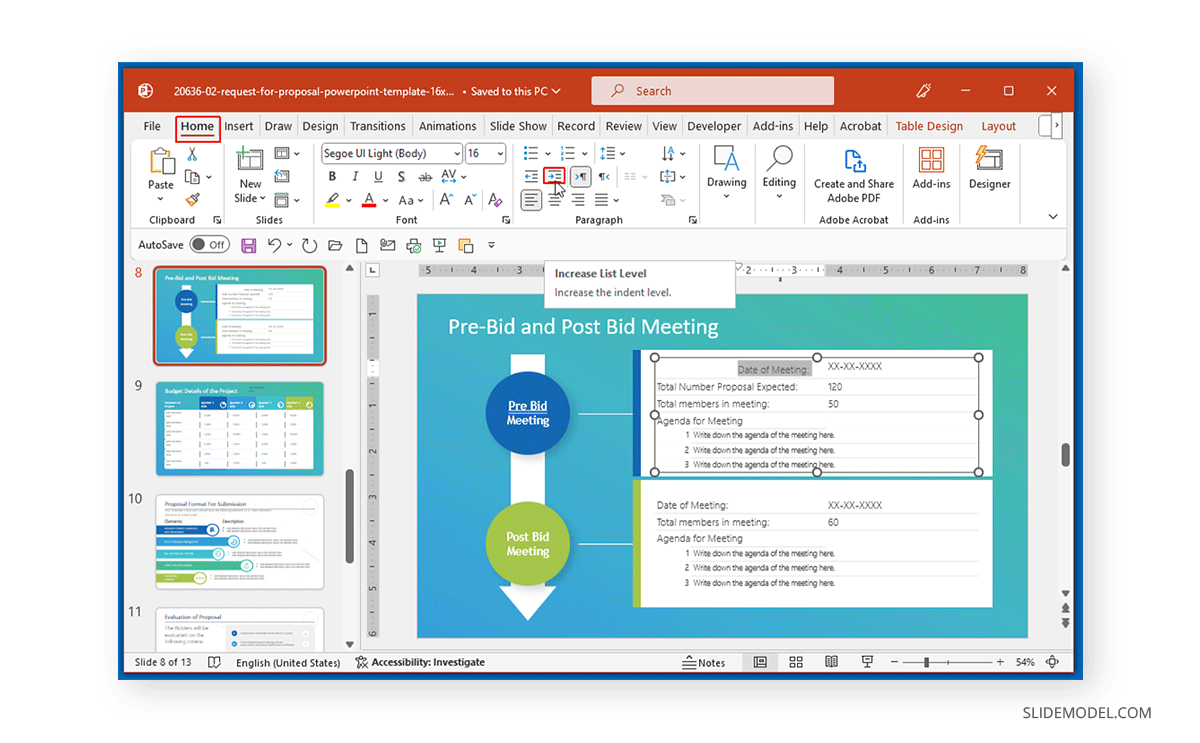
Another method to change the indent markers. For this purpose, you will be required to use drag and drop. To get started, ensure that the Ruler is visible in PowerPoint. If not, enable the Ruler from the View tab from the Ribbon menu.
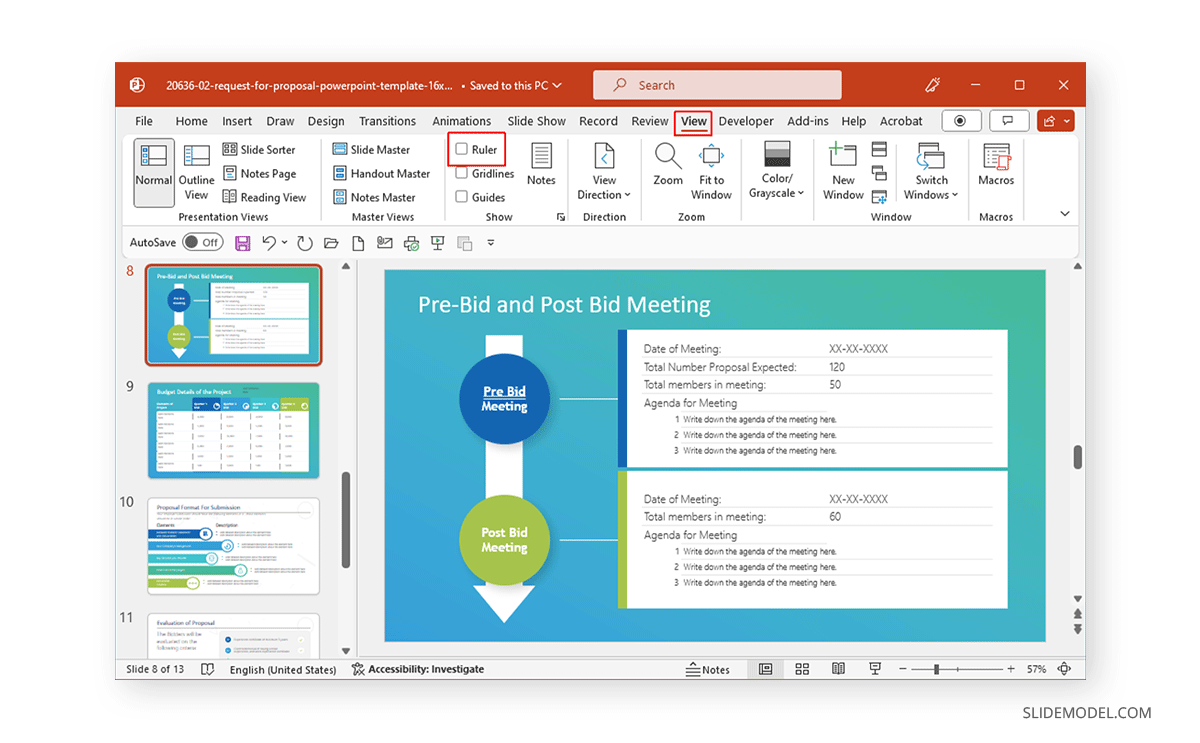
From the Ruler, drag the indent markers to move the text. Select the text to adjust, and move the markers to move it towards the right.
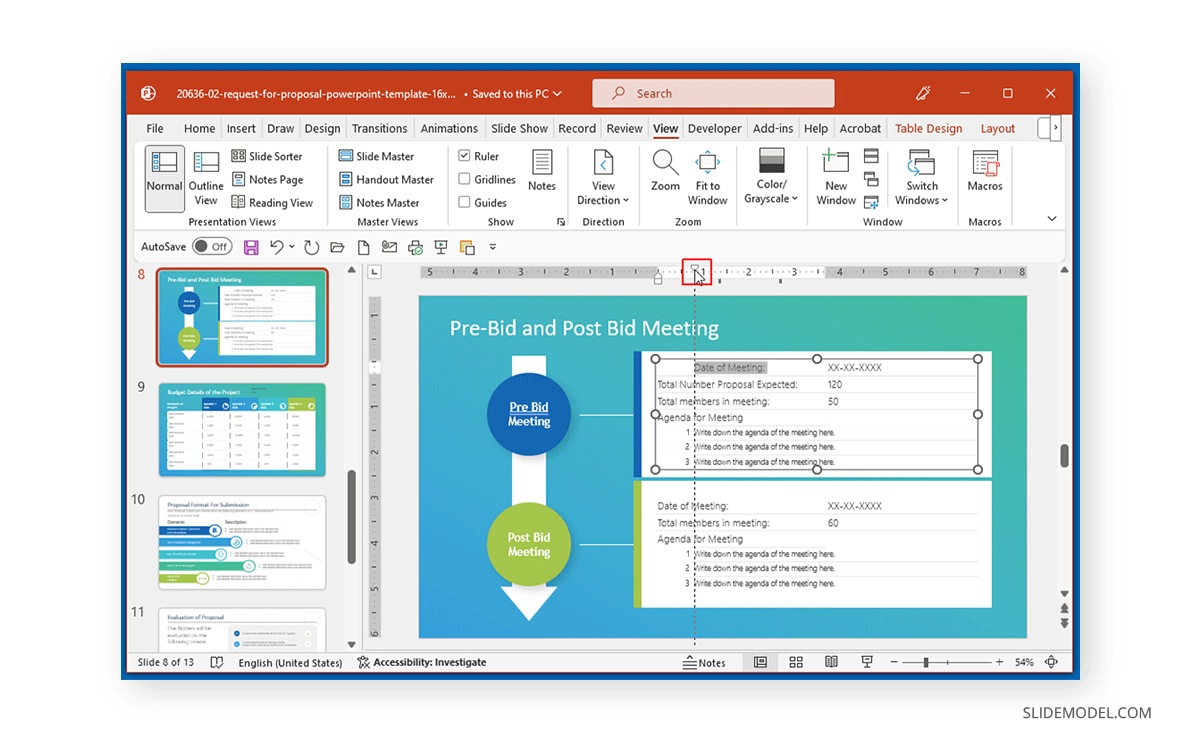
The hanging indent marker at the bottom can be an excellent way to control bulleted lists by adjusting them away from the text before the list starts. This can help make the lists appear more manageable to read, where the introductory text can be adjusted towards the left, whereas the bulleted text can be indented a bit towards the right.
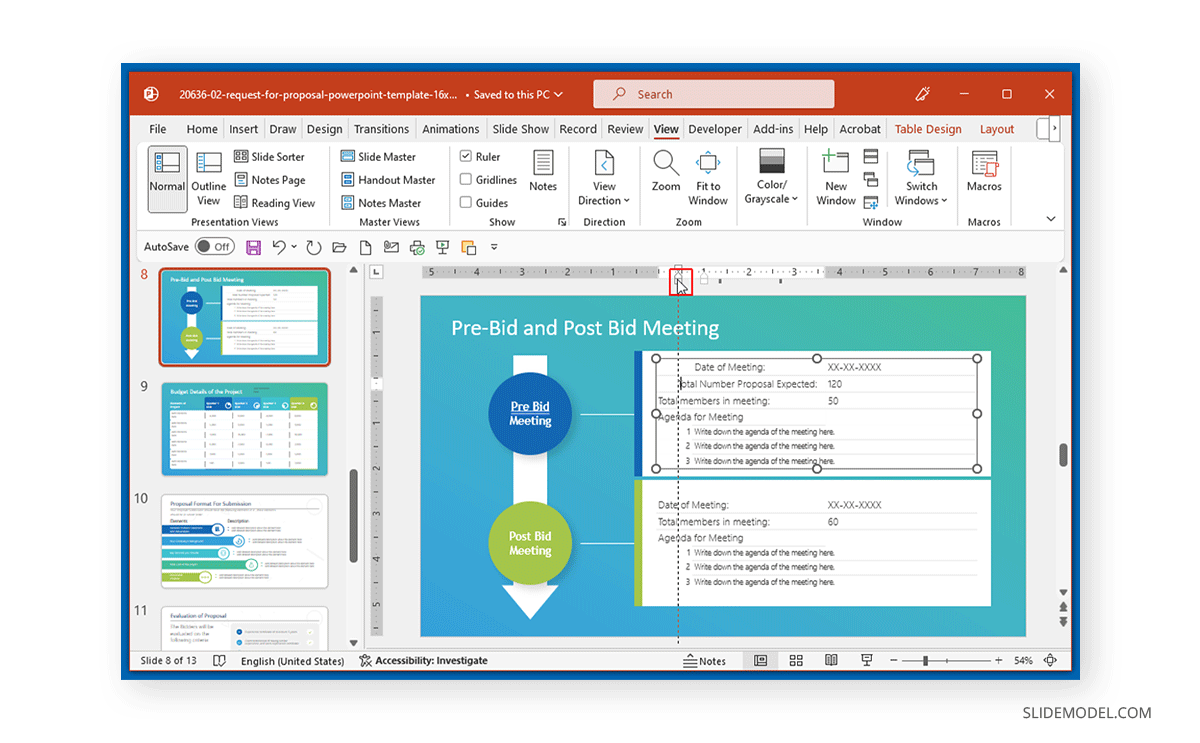
How to Change Leading in PowerPoint (Line Height)
In PowerPoint, leading refers to the space between lines of text, also known as line height or line spacing. Adjusting the leading can make text more readable and visually appealing, especially when dealing with large amounts of content or presentation slides with complex layouts. Here’s how you can change the leading (line height) in PowerPoint.
Steps to Change Leading in PowerPoint:
- Select the Text: First, highlight the text where you want to change the leading (line spacing).
- Open the Paragraph Dialog: Go to the Home tab and, under the Paragraph group, click on the Line Spacing icon.
- Choose a Preset: You will see preset options like 1.0, 1.5, 2.0, 2.5, and 3.0. Select the spacing you need, or click Line Spacing Options for more control.
- Custom Leading (Line Spacing): If the default options don’t meet your requirements, you can click Line Spacing Options to manually adjust the spacing. This will bring up a dialog box where you can specify the exact leading by entering custom values.
- Set Spacing Before/After Paragraphs: In the same dialog box, you can also adjust the space before or after paragraphs, which is another element that influences leading, giving your text better spacing and readability.
Why Change Leading in PowerPoint?
- Improves Readability: Adjusting the space between lines can enhance text clarity and legibility, making it easier for the audience to follow your content.
- Aesthetic Balance: Proper leading helps balance the text with other elements on the slide, creating a clean and professional appearance.
- Custom Designs: Sometimes, custom designs require unique spacing to align with branding guidelines or specific presentation templates.
By understanding how to control leading in PowerPoint, you can better format your slides and create a more engaging and easy-to-read presentation.
Final Words
Line spacing and indent can help adjust text to make it easier to read. Using these simple options, you can format your PowerPoint slides better, creating slides with better alignment of text and lists and a polished look. Also, check our article about how to do Hanging Indent on Google Slides.


